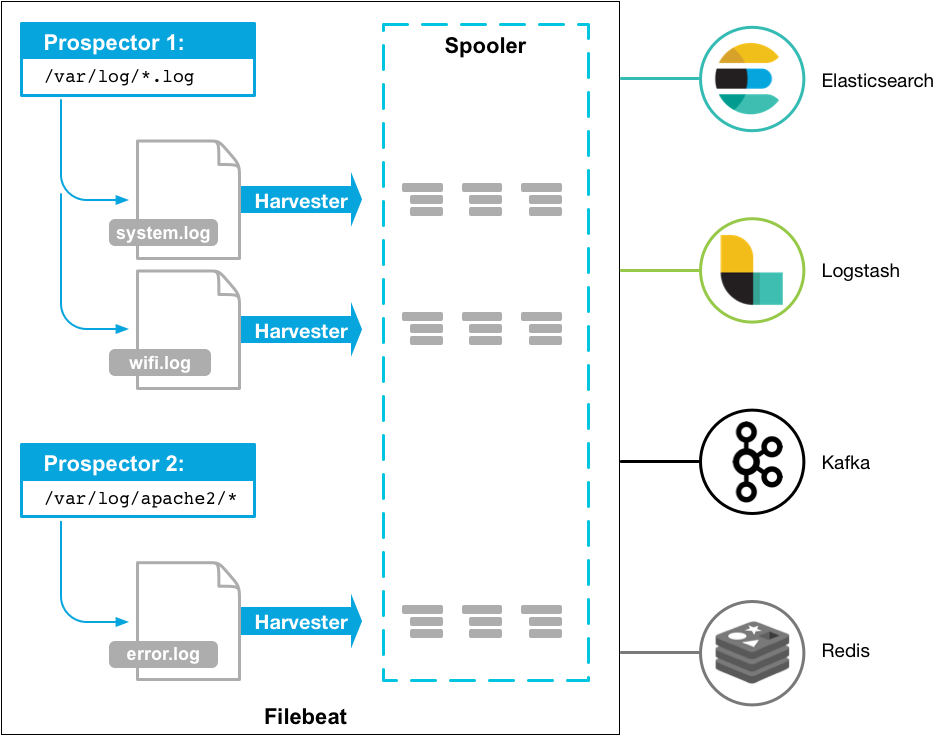

Configure Logstash to output to Elasticsearch in the following # vi /etc/logstash/conf.d/nf.It groks the input data, filters/transforms it, then outputs it variously. It doesn’t store anything, it has inputs and outputs, and in between, a bunch of different types of filters.
#Filebeats s3 install#
In order to process logs to load our indices, we need to install Logstash. There are no indices at this time, but we’ll add them in the next few steps.

After starting, even if the status is running, it might take a minute or two for Elasticsearch’s API to respond, so if it timeouts as soon as you start the service, try again after a few # systemctl enable # systemctl start # curl -X GET "localhost:9200" Start and verify Elasticsearch is working.Install the Elasticsearch # curl -fsSL | sudo apt-key add # echo "deb stable main" | sudo tee -a # apt-get # apt-get -y install elasticsearch.Add the apt repo key where not only Elasticsearch but other components such as Logstash and Kibana are also downloaded later in the next steps.In production, you should architect these on separate nodes so you can scale the individual components. We’ll install it on the same node for the sake of simplicity and to ensure we don’t have to worry about opening ports between the nodes. We’ll go through the most basic way to install Elasticsearch-Logstash-Kibana.
#Filebeats s3 how to#
In this blog post we’ll show you how to visualize these patterns in a consumable way that facilitates insight. For example, you might want to check for trends or bottlenecks and try to identify patterns in workload type or time of day. By sending MinIO service logs to Elasticsearch, we will gain visibility into the operations of MinIO, you can see patterns and alerts in a Kibana graphical interface that would allow you to run further analysis and even alerting based on certain thresholds. MinIO is capable of tremendous performance - a recent benchmark achieved 325 GiB/s (349 GB/s) on GETs and 165 GiB/s (177 GB/s) on PUTs with just 32 nodes of off-the-shelf NVMe SSDs. MinIO’s combination of scalability and high-performance puts every data-intensive workload, not just Elasticsearch, within reach. MinIO is the perfect companion for Elasticsearch because of its industry-leading performance and scalability.

In a previous blog we went over details on how to snapshot and restore from Elasticsearch. In addition, saving Elasticsearch snapshots to MinIO object storage makes them available to other cloud native machine learning and analytics applications.
#Filebeats s3 plus#
It is more efficient when used with storage tiering, which decreases total cost of ownership for Elasticsearch, plus you get the added benefits of writing data to MinIO that is immutable, versioned and protected by erasure coding. MinIO is frequently used to store Elasticsearch snapshots, it makes a safe home for Elasticsearch backups.
#Filebeats s3 download#
Docs Blog Resources Partner Pricing Download VMware Discover how MinIO integrates with VMware across the portfolio from the Persistent Data platform to TKGI and how we support their Kubernetes ambitions. HDFS Migration Modernize and simplify your big data storage infrastructure with high-performance, Kubernetes-native object storage from MinIO. Splunk Find out how MinIO is delivering performance at scale for Splunk SmartStores Veeam Learn how MinIO and Veeam have partnered to drive performance and scalability for a variety of backup use cases. No need to move the data, just query using SnowSQL. Snowflake Query and analyze multiple data sources, including streaming data, residing on MinIO with the Snowflake Data Cloud. Commvault Learn how Commvault and MinIO are partnered to deliver performance at scale for mission critical backup and restore workloads. Integrations Browse our vast portfolio of integrations SQL Server Discover how to pair SQL Server 2022 with MinIO to run queries on your data on any cloud - without having to move it.


 0 kommentar(er)
0 kommentar(er)
